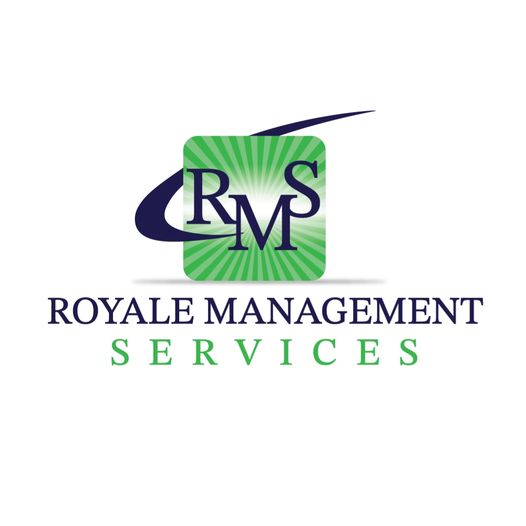THE FEDERAL CORPORATE TRANSPARENCY ACT REQUIREMENTS AFFECTING ALL COMMUNITY ASSOCIATIONS
What Every Board Member and Manager Must Know
In January 2021 the Corporate Transparency Act (CTA) was enacted by Congress. In 2024 its far-reaching requirements are planned to go into effect. The CTA was adopted by Congress to provide additional transparency in entity structures and ownership in an effort to combat tax fraud, money, laundering, and other illicit activities. It is designed to capture more information about the ownership of specific entities operating in or accessing the United States marketplace. A recent Small Business Administration reports over 27 million small businesses that are considered non-employer firms and thus have no employees. Learning of the beneficial ownership of these entities, Congress hopes to crack down on their misuse. The CTA is particularly targeted to these types of small businesses operating as so called “shell companies.”
By the time you are finished reading this article, each reader should be familiar with some new terms, such as, “FinCen,” and “beneficial owner,” to name just a couple. While the practical enforcement procedures of the CTA are currently unknown, the reason why you must be familiar with the registration and continuing reporting requirements of the CTA is because failure to comply with requirements of the CTA can lead to fines from $500–$10,000 per violation and jail time of up to two years.
While there is little doubt that community associations do not pose a threat for terrorist activity, tax evasion, money laundering, and other illegal activity that is the target of the CTA, sadly, community associations are not currently exempt from the initial registration and continual updating requirements of the CTA. While the CTA requirements for compliance are not particularly difficult, they are onerous and will reveal certain personal information about board members and possibly managers, too. Also, at the present time there does not appear to be any type of exemption from the requirements of the CTA for law enforcement personnel and others who may have gone to extra lengths to keep certain personal information private. However, the CTA does require that this information remains confidential and only used for its intended purposes.
The CTA, amongst its other requirements, requires domestic reporting companies such as corporations, limited liability partnerships, and any other entity, created by the filing of a document with the secretary of state, or any similar office under the laws of the state, to comply with its reporting requirements. This includes community associations as they are organized as a business entity (i.e., a not-for-profit corporation). In addition to providing the information regarding the entity (meaning the association), the CTA requires certain information regarding the association’s “beneficial owners.” A “beneficial owner” is defined, in part, as a person who exercises substantial control of the reporting entity.
Therefore, minimally, according to the CTA, the president and vice president are deemed to “exercise substantial control over the entity” thereby seemingly requiring certain personal information to be provided to the federal “Financial Crimes Enforcement Network” or “FinCen” for short. These beneficial owners must report their name, date of birth, address, unique identifier number, such as a Social Security number, possibly a driver’s license number or passport number, and a photocopy of the non-expired document that evidences such information, too. Whether other officers and directors will be required to similarly provide personal information remains to be seen but it is likely.
Those filing the requisite documents to assist an entity with its compliance with the CTA must provide similar information too. Those qualified to file such documents for corporate entities with FinCen are as follows either:
i) the individual who directly files the document that creates the entity (this could be the attorney that files the articles of incorporation with the state to create the community association corporation); or,
ii) the individual who is primarily responsible for directing or controlling the filing of the relevant document by another (this prong could refer to the authorized individual as directed by the board of directors, such as the attorney, accountant, or management company personnel to file the necessary documentation with FinCen to comply with the CTA).
In addition to the initial compliance requirements, which must be accomplished within 2024 for already existing corporations, reports must also be updated within 30 days of a change to the beneficial ownership, or within 30 days after becoming aware of or having reason to know of inaccurate information previously filed. Under a strict reading of these provisions, this means that every time there is a change in board members and officers, a report of the change must be made to FinCen within 30 days of the event. As mentioned above, failure to comply with requirements of the CTA can lead to fines from $500–$10,000 per violation and jail time of up to two years.
There are procedures set out in the CTA for information sharing among the federal governmental agencies when in relation to terrorist activity and money laundering as well as requirements for compliance with FinCen when it seeks additional information in regard to such matters. The Internal Revenue Service, the Customs and Border Protection agency, and FinCen can all issue summons for purposes of civil enforcement of the CTA. There are even rewards for persons who report on another that lead to recovery of a criminal fine, civil penalty, or forfeiture that exceeds $50,000 where the payment of the reward is limited to 25 percent of the net amount of the fine or $150,000, whichever is less.
Federal community association lobbyists are seeking an amendment to the CTA so that community associations are expressly made exempt and not caught in its web. But, unless that happens, compliance with the CTA is required for Florida’s community associations. Whether such compliance will be performed by the community association‘s attorney, accountant, or manager remains to be seen, and hopefully additional guidance will be provided by the appropriate federal government agencies in the near future. Should you have the opportunity, please reach out to your federal legislators in regard to the need for an exception for community association compliance with the requirements of the CTA.
For those that would like to read up on the CTA, the starting point for the Act itself can be found at 31 U.S.C 5336. This is the CTA-enabling legislation passed by the United States Congress and signed into law by the President that provides lawful authority to executive departments and agencies of the federal government to both adopt and enact, after public notice and hearings, their own laws that have the same force and effect, as if our Congress enacted them. (As an aside in case you ever wondered how our country ended up with so many laws, it is because of this particular process.) Once 31 U.S.C 5336 was enacted into law, the requisite executive departments and agencies of the federal government went to work adopting all sorts of laws to carry out the intent of the enabling legislation. These laws are published in the Code of Federal Regulations (CFR). The CTA is set out in section 1010 FCR 380 and is actually called “Reports of Beneficial Ownership Information;” however, its nickname is the “Corporate Transparency Act,” which has a better ring to it. The CTA can be cited to more fully as Part 1010 of the Code of Federal Regulations (CFR) Subpart C, section 380. It is a sub-part of CFR Title 31 titled “Money and Finance,” Subtitle B “Regulations Relating to Finance and Money,” Chapter X “Financial Crimes Enforcement Network Department of the Treasury.”
Due to the far reaching aspects of the CTA and its many nuances that could lead to many traps for the unwary, consultation with the association’s attorney and certified public accounting firm should be considered regarding any questions you may have in regard to the CTA, along with its registration and compliance requirements, too.
Read other great articles on:
REMBAUM’S ASSOCIATION ROUNDUP | The Community Association Legal News You Can Use
Tags: Law and Legal








 Tax planning is one of the best ways we know to reduce your tax bill, and at RMS Accounting we take a proactive approach to helping clients pay the lowest amount of tax allowed by law.
Tax planning is one of the best ways we know to reduce your tax bill, and at RMS Accounting we take a proactive approach to helping clients pay the lowest amount of tax allowed by law.












